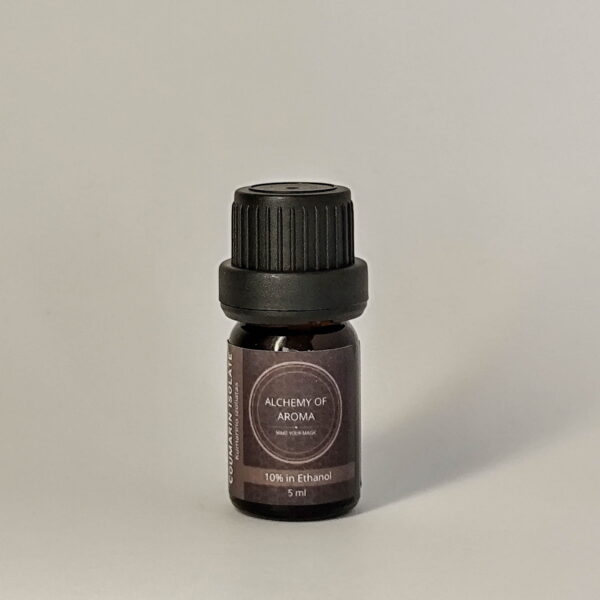- Product description
- Guidelines for perfumery
- Guidelines for aromatherapy
- Safety tips
Benzyl benzoate holds a crucial role in the world of perfumery, primarily due to its multifaceted applications and benefits. As a fixative, benzyl benzoate is indispensable; it significantly contributes to the stabilization and prolongation of a perfume’s scent. By slowing the evaporation of more volatile components, it ensures that fragrances maintain their intended profile over time, enhancing the wearer’s overall experience. Beyond its fixative properties, benzyl benzoate is renowned for its ability to blend and harmonize different fragrance notes. This compound helps in creating a seamless transition between the top, middle, and base notes of a perfume, adding to its complexity and depth. It acts as a bridge, ensuring that disparate scent elements meld together in a cohesive and balanced manner.
Uses in Perfumery:
- Fixative: One of the most prominent roles of benzyl benzoate in perfumery is as a fixative. It helps to stabilize the volatility of the fragrance, ensuring that the scent lasts longer on the skin. By slowing down the evaporation of more volatile components, it allows the fragrance to unfold gradually and persistently.
- Solvent: Benzyl benzoate is an excellent solvent for many essential oils and synthetic fragrances. Its ability to dissolve a wide range of aromatic compounds makes it a valuable ingredient in the formulation of complex perfumes, ensuring a homogenous blend of various scent notes.
- Aroma Ingredient: While benzyl benzoate itself has a mild, sweet balsamic odor, it is rarely used for its scent. Instead, it supports and enhances the overall fragrance profile by interacting synergistically with other aromatic compounds.
- Base Note: In some formulations, benzyl benzoate can act as a subtle base note, providing a warm, sweet foundation that complements and enriches the higher notes of the perfume.
- Stability Agent: It contributes to the overall stability of the fragrance, protecting the more delicate aromatic ingredients from degradation over time. This helps maintain the integrity and quality of the perfume throughout its shelf life.
Related
Understand the Notes:
- Top Notes: Light, fresh, and evaporate quickly (e.g., citrus oils like lemon and bergamot).
- Middle Notes: The heart of the fragrance, balancing top and base notes (e.g., lavender, rosemary).
- Base Notes: Long-lasting and grounding (e.g., vetiver, patchouli, sandalwood).
Creating a Blend:
- Start with a 30:50:20 ratio of top, middle, and base notes.
- Experiment with different combinations to find your unique scent.
Dilution:
- Always dilute essential oils in a carrier oil (such as jojoba, sweet almond, or fractionated coconut oil) or alcohol (like perfumer’s alcohol) before applying to the skin.
- A common ratio is 15-30 drops of essential oil per 30ml (1 ounce) of carrier oil.
Aging Your Blend:
- Allow your blend to age for at least a few days, preferably a few weeks, to let the scents meld and mature.
- Store in a cool, dark place and shake occasionally.
Inhalation:
- Diffusers: Add 5-10 drops of essential oil to an ultrasonic diffuser filled with water.
- Steam Inhalation: Add 1-2 drops to a bowl of hot water, cover your head with a towel, and inhale deeply.
Topical Application:
- Dilution: Dilute essential oils in a carrier oil before applying to the skin. A common dilution is 2-3 drops per teaspoon (5ml) of carrier oil.
- Massage: Use the diluted oil for a soothing massage. Common areas include the neck, shoulders, and feet.
- Roller Bottles: Fill a roller bottle with a carrier oil and add essential oils. Apply to pulse points like wrists, temples, and behind the ears.
- Patch Test: Before using a new product on your skin, perform a patch test. Apply a small amount of the diluted product to a patch of skin and wait 24 hours to check for any adverse reactions.
- Avoid Sensitive Areas: Do not apply to sensitive areas such as the eyes, ears, mucous membranes, or broken skin.
- Pregnancy and Nursing: Consult a healthcare professional before using our products if you are pregnant, nursing, or have a medical condition.
- Children and Pets: Use caution when using our products around children and pets. Always research or consult a professional regarding safe usage.
- Photosensitivity: Certain essential oils, especially citrus oils like bergamot, lemon, and lime, can cause photosensitivity, increasing the risk of sunburn. Avoid sun exposure for 12-24 hours after applying these oils to the skin.
- Storage: Store in a cool, dark place, away from direct sunlight and heat. Keep them out of reach of children and pets.




